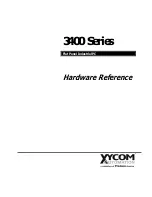
2
MN1620
Output Speeds Above 15 RPM
Mounting Position
Vent and Plug Locations
1
2
3
4
5
6
Position A
Level
Plug
Drain
Vent
Plug
Plug
Position B
Drain
Vent
Level
Plug
Plug
Plug
Position C
Plug
Level
Vent
Drain
Plug
Plug
Position D
Vent
Drain Level
Plug
Plug
Plug
Position E
Level
Plug
Plug
Drain
Vent
Plug
Position F
Plug
Drain Level
Plug
Plug
Vent
Output Speeds 15 RPM and Below*
Mounting Position
Vent and Plug Locations
1
2
3
4
5
6
Position A
Plug
Level Drain
Vent
Plug
Plug
Position B
Drain
Vent
Plug
Level
Plug
Plug
Position C
Level
Plug
Vent
Drain
Plug
Plug
Position D
Vent
Drain Level
Plug
Plug
Plug
Position E
Level Plug
Plug
Drain
Vent
Plug
Position F
Plug
Drain Level
Plug
Plug
Vent
* Below 15 RPM output speed, oil level must be adjusted to
reach the highest oil level plug. If reducer position is to vary
from those shown in Figure 1, either more or less oil may be
required. Consult your Dodge Sales Representative.
The running position of the reducer in a horizontal application
is not limited to the four positions shown in Figure 1. However,
if running position is over 20º in position “B” & “D” or 5º in
position “A” & “C”, either way from sketches, the oil level plug
cannot be used safely to check the oil level, unless during the
checking, the torque arm is disconnected and the reducer
is swung to within 20º for position “A” & “C” or 5º for position
“B” & “D” of the positions shown in Figure 1. Because of the
many possible positions of the reducer vent seepage might
occur and it may be necessary or desirable to make special
adaptations using the lubrication filling holes furnished along
with other standard pipe fittings, stand pipes and oil level
gauges as required.
3. Mount reducer on driven shaft as follows:
For Taper Bushed Reducer:
Mount reducer on driven shaft
per instruction in Torque-Arm II Bushing Installation section of
this manual.
4. Install sheave on input shaft as close to reducer as practical
(see Figure 2).
5. If not using a Dodge Torque-Arm II motor mount, install motor
and V-belt drive so belt will approximately be at right angles to
the centerline between driven and input shaft (see Figure 3).
This will permit tightening the V-belt with the torque arm.
6. Install torque arm and adapter plates reusing the reducer
bolts. The adapter plates will fit in any position around the
input end reducer.
7. Install torque arm fulcrum on a flat and rigid support so that
the torque arm will be approximately at right angles to the
centerline through the driven shaft and the torque arm anchor
screw. (See Figure 4) Make sure that there is sufficient take-
up in the turnbuckle for belt tension adjustment when using
V-belt drive.
CAUTION: Unit is shipped without oil. Add proper amount
of recommended lubricant before operating. Failure to
observe this precaution could result in damage to or
destruction of the equipment.
8. Fill gear reducer with recommended lubricant. See Table 2.
TORQUE-ARM II BUSHING INSTALLATION
WARNING: To ensure that drive is not unexpectedly started,
turn off and lock out or tag power source before proceeding.
Remove all external loads from drive before removing or
servicing drive or accessories. Failure to observe these
precautions could result in bodily injury.
The Dodge Torque-Arm II reducer is designed to fit both standard
and short length driven shafts. The Standard Taper Bushings
series is designed where shaft length is not a concern. The Short
Shaft Bushing series is to be used where the driven shaft does
not extend through the reducer.
Standard Taper Bushings
1. One bushing assembly is required to mount the reducer
on the driven shaft. An assembly consists of two tapered
bushings, bushing screws and washers, two bushing backup
plates and retaining rings, and necessary shaft key or keys.
The driven shaft must extend through the full length of the
reducer. If the driven shaft does not extend through the
reducer do not use the standard tapered bushings; instead
use the short shaft bushings as described in the Short Shaft
Bushings section that follows. The minimum shaft length, as
measured from the end of the shaft to the outer edge of the
bushing flange (see Figure 5), is given in Table 1.
Figure 2 - Reducer and Sheave Installation
90° OR
MAY VARY 30°
V-BELT
DRIVE
V-BELT
DRIVE MAY
BE LOCATED
TO THE
RIGHT IF
DESIRED
Figure 3 - Angle of V-Drive
90° ANGLE OR
MAY VARY 20° IN
TENSION OR
COMPRESSION
TORQUE-ARM
AND BELT
TAKE-UP
TORQUE
ARM MAY
BE LOCATED
TO THE
RIGHT IF
DESIRED
Figure 4 - Angle of Torque-Arm
Summary of Contents for Ratios 15
Page 31: ...31 MN1620...



































